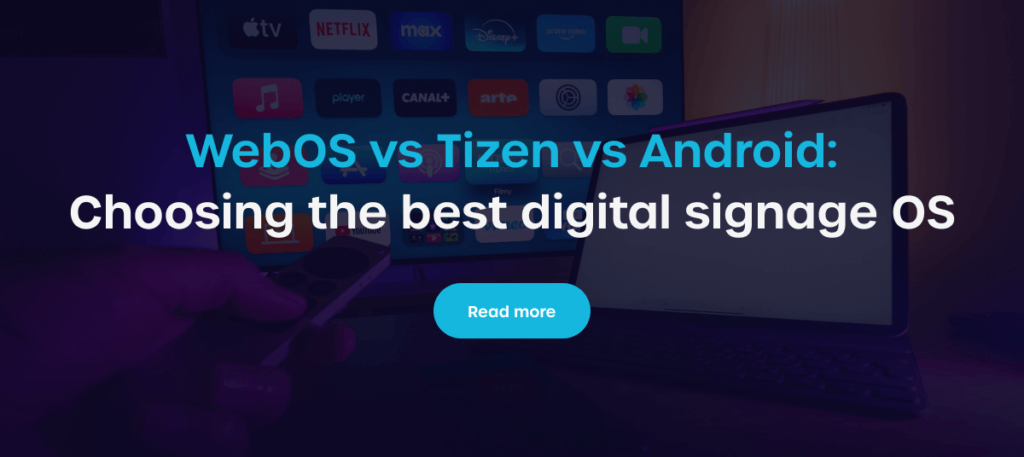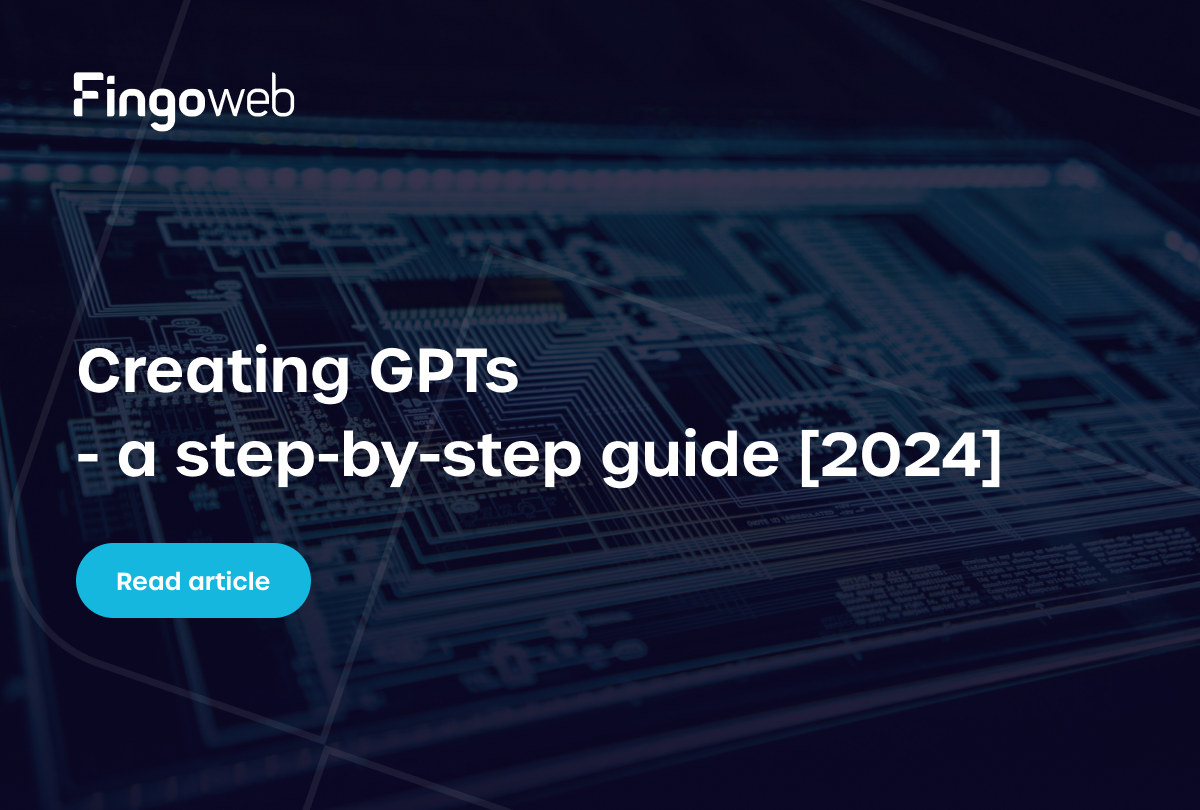Content automation for digital signage allows businesses to deliver timely, relevant messages without constant manual updates. By connecting displays to real-time data sources and APIs, content can adjust automatically based on changing conditions. This approach improves efficiency and keeps viewers engaged with up-to-date information.
In this article, we explain how to use content automation effectively with the help of real-time data and API integrations.
Understanding content automation in digital signage
Content automation for digital signage refers to the use of technology to automatically manage and display dynamic content on digital screens. This approach helps ensure that messages shown on screens are always timely and relevant to the audience.
What is content automation?
Content automation is the process of using software to automatically generate and update visual content without the need for constant manual input. This can involve scheduling messages, integrating various content types, and automatically pulling in data from real-time sources to keep displays fresh and engaging.
There are two common approaches to content automation in digital signage:
- Conditional display logic: For example, if the temperature rises above a certain threshold, one type of content is shown; otherwise, a different message appears. This logic can be applied to many types of data, not just weather.
- Data-driven content triggers: Content can be set to appear only when specific conditions are met. If a particular market trend is detected or a location-specific event occurs, relevant content is automatically displayed or hidden.
Benefits of real-time data in digital signage
Real-time data integration enables TV Applications to respond instantly to changing conditions. Instead of manually updating content, the system adjusts displays automatically based on current data.
Examples of how real-time integration can be used:
- Live data display: Present up-to-date information such as temperature, weather forecasts, or stock market graphs directly on the screen.
- Location-aware content: Tailor messages based on the geographic location of the screen, such as promoting local events, nearby stores, or regional offers.
- Inventory-based messaging: Automatically show how many units of a product are left in stock or alert customers when an item is almost sold out.
Challenges in implementing content automation
Implementing content automation comes with several challenges. These include integrating different systems, ensuring reliable internet access, and managing inconsistent or hard-to-retrieve data. Frequent data updates – like weather or stock info – can overload devices if not properly optimized.
The more systems you connect, the more potential errors you must handle, from missing data to incorrect formats. Content moderation is also crucial to prevent inappropriate or off-brand messages from being displayed. On top of that, smart planning and safeguards are essential to ensure smooth and safe automation.
Leveraging real-time data sources
To truly harness the power of content automation for digital signage, incorporating real-time data sources allows displays to reflect current conditions and stay relevant. Integrating live data into signage systems creates opportunities for more dynamic, responsive, and context-aware content.
Introduction to APIs and their importance
APIs are sources from which applications can retrieve data. They come in various forms such as REST, GraphQL, SOAP, or WebSocket, and each may require a different integration approach depending on its structure. When working with APIs, it's important to consider their limitations – like connection rate limits or usage fees – which can impact how your system operates.
Data from APIs can also come in different formats, so it's often useful to create an intermediary API layer that restructures the incoming data to better fit your application's needs. Proper planning and handling of APIs are essential for building a stable and efficient content automation system.

How weather data can enhance digital signage
Integrating weather data into digital signage allows content to adapt based on current conditions, making it more relevant and psychologically aligned with the viewer's environment. Weather influences mood and behavior, so tailoring content accordingly can create a more engaging and effective experience.
For example:
- On a sunny day, displays might promote outdoor products, sunglasses, or patio dining options.
- During rainy weather, screens could highlight cozy indoor venues, hot beverages, or rain gear.
- When it’s cold, signage might feature winter clothing, warm meals, or indoor entertainment ideas.
Using sports, financial, and stock APIs to engage the audience
Sports, financial, and stock APIs offer real-time data that can make digital signage solutions more dynamic and engaging. Showing live match results, stock market updates, or currency exchange rates draws attention by providing content people are naturally curious about.
For instance, a football fan might glance at the screen to check a score and, at the same time, notice a promotion for a nearby sports store. Similarly, someone interested in stock prices might be more receptive to a financial service ad shown alongside. This blend of timely information and relevant messaging helps digital signage capture attention and subtly guide viewers toward desired actions.

Best practices for integrating APIs into your digital signage
For effective content automation in digital signage, following best practices when integrating APIs helps maintain a smooth and reliable data flow. Proper integration ensures that the content remains accurate, timely, and relevant, enhancing the overall viewer experience.
Choosing the right API for your needs
Selecting the right API is essential for achieving effective content automation for digital signage. It’s important to assess your specific needs, audience preferences, and the types of data you wish to display to ensure you choose an API that aligns perfectly with your goals.

The choice often comes down to cost. These services can have connection limits or charge per request, and it varies widely.
It’s important to check whether the API is popular and built to handle high traffic. Many systems don’t scale well and may fail to deliver data reliably under heavy load. Always review the documentation carefully – cost, speed, and stability matter most.
Ensuring data accuracy and timeliness
Ensuring data accuracy and timeliness is key to making content automation truly effective in digital signage. It’s important to use reliable data sources that are frequently updated to keep the content as close to real-time as needed.
At the same time, implementing smart caching strategies can reduce unnecessary load – there’s often no need to fetch data like temperature every 10 seconds when updating it once an hour is enough. Balancing update frequency with actual requirements helps maintain system performance and stability – while still delivering relevant, timely information.
FAQ - Content automation for digital signage
What is content automation for digital signage and how does it work?
Digital signage content automation is a technology-driven process that allows for the automatic display of dynamic content based on real-time data. This system works by integrating various data sources into digital signage software, enabling timely and relevant messaging without requiring constant manual updates.
Why is real-time data important in content automation for digital signage?
Real-time data is crucial for content automation in digital signage as it allows businesses to present the most relevant and timely information to their audience. This immediacy not only captivates viewers but also drives engagement, making digital signage solutions much more effective.
What are the main challenges in implementing content automation for digital signage?
Some key challenges in implementing content automation for digital signage include dealing with technical issues during integration, managing the accuracy of data, and ensuring that the displayed content maintains a high level of quality. Each of these challenges requires strategic planning and ongoing oversight to ensure success.
How do I choose the best API for content automation for digital signage?
Choosing the best API for content automation for digital signage involves evaluating your specific requirements, including the types of data you need, the frequency of updates, price and compatibility with existing digital signage software. Thoroughly researching available APIs and conducting tests can also help determine which option will provide the most value for your needs.









